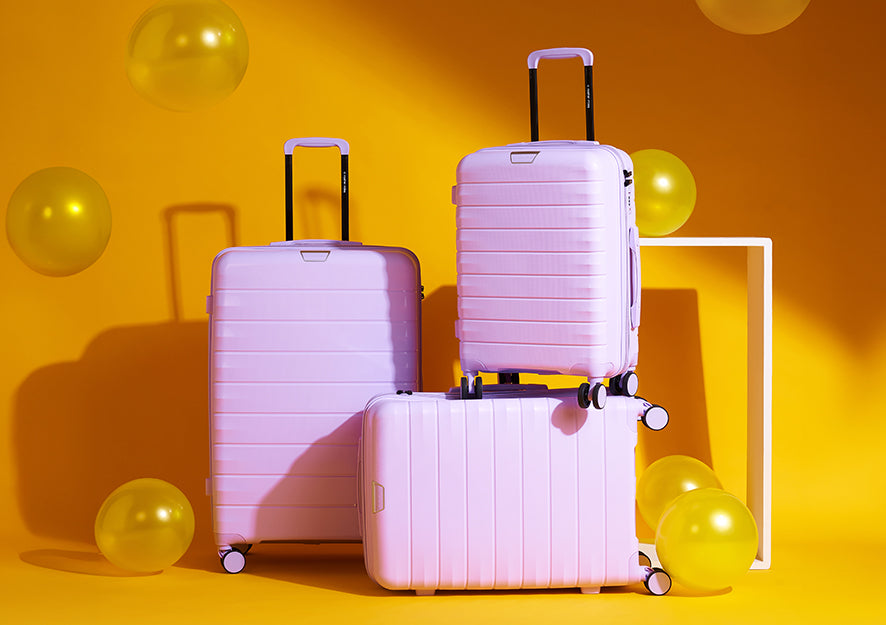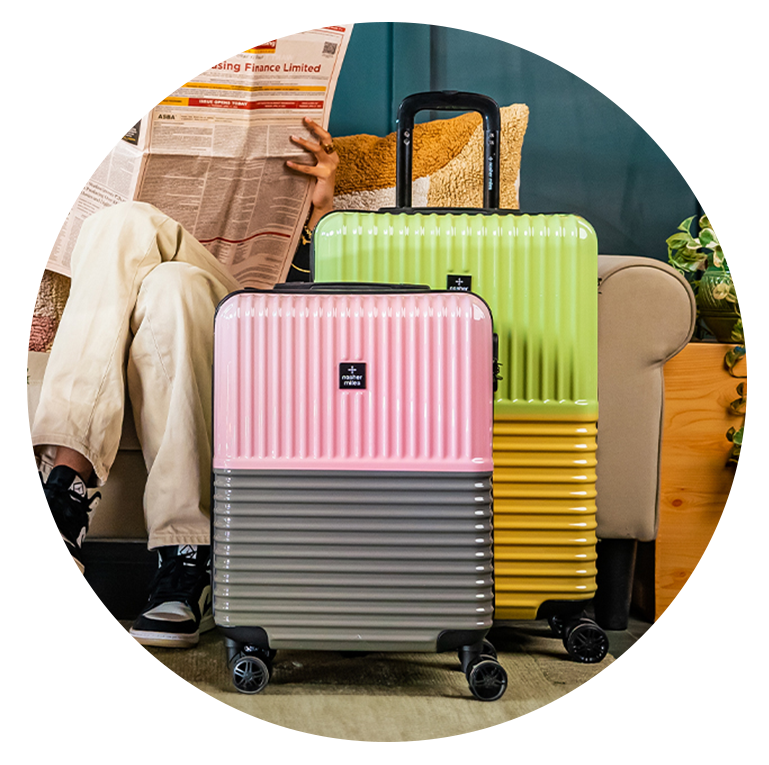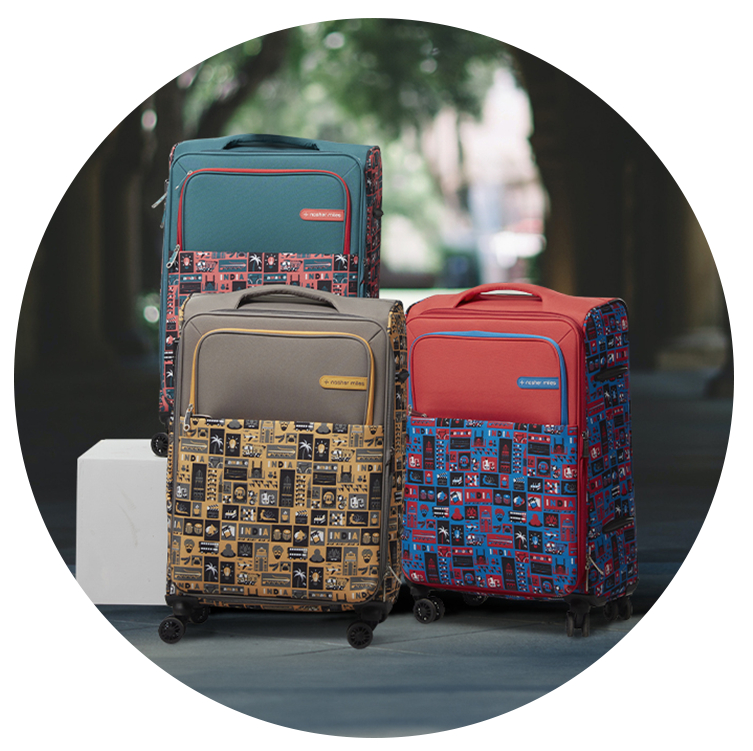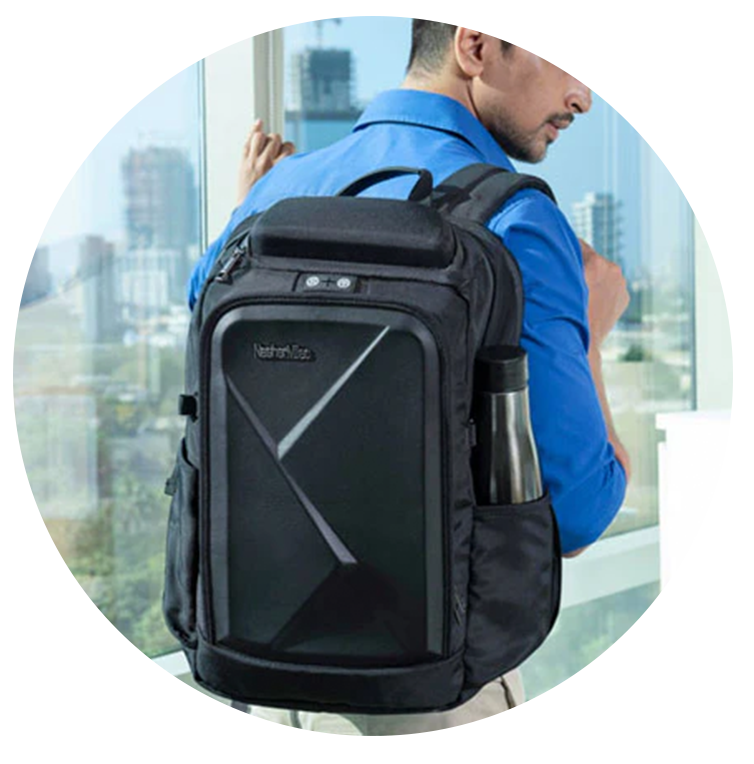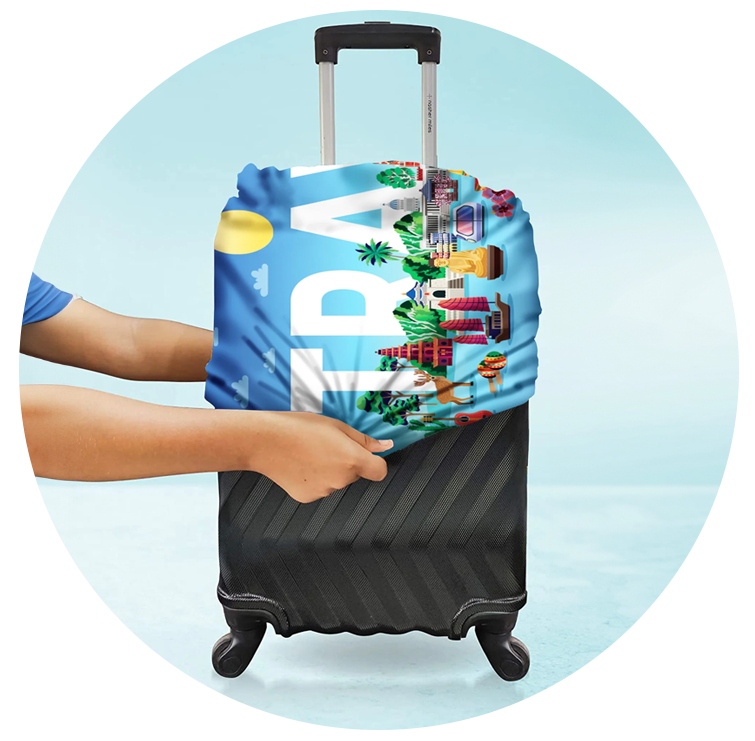Passenger Baggage Information
For Indian Railways
Each passenger is allowed a free allowance up to which he can carry luggage with him in the compartment, free of charge. The free allowance varies for different classes of travel. Children aged 5 and below 12 years are allowed half of the free allowance, subject to a maximum of 50 kg. You are also permitted a marginal allowance. There is a maximum ceiling on the luggage that can be carried inside the compartment for each class. These are indicated in the table below:
| Class | Free allowance | Marginal allowance | Maximum quantity permitted (including free allowance) |
|---|---|---|---|
| AC First Class | 70 Kgs | 15 Kgs | 150 Kgs |
| AC 2-Tier sleeper/First class | 50 Kgs | 10 Kgs | 100 Kgs |
| AC 3-tier sleeper/AC chair car | 40 Kgs | 10 Kgs | 40 Kgs |
| Sleeper class | 40 Kgs | 10 Kgs | 80 Kgs |
| Second class | 35 Kgs | 10 Kgs | 70 Kgs |
For Airlines
Airlines set the rules for how many bags you may check in and for possible related charges. These rules can vary according to frequent flyer status, the product you have purchased, and the route upon which you fly.
The following information will help you understand the rules regarding checked and carry-on baggage and the role IATA plays in this area.
Carry-On Baggage
Weight and Size
Carry-on baggage allowances can vary according to the airline, the cabin class you are traveling in, and even the size of the aircraft. As a general guide, carry-on baggage should have a maximum length of 22 inches (56 cm), a width of 18 inches (45 cm), and a depth of 10 inches (25 cm). These dimensions include wheels, handles, side pockets, etc.
Some airlines also enforce weight limitations, typically starting at 5 kg/11 lbs.
To avoid additional charges, please check with your airline before you travel so that you are fully aware of the carry-on baggage allowance included in your airfare.
If you are using different airlines throughout your journey, you should check their websites for up-to-date information regarding carry-on baggage allowances.
Sharp Objects
All knives, sharp objects, or cutting implements of any kind and of any length, whether of metal or other material, and some sporting goods must be packed in checked baggage. They cannot be carried in the cabin baggage or on your person.
Liquids, Aerosols, Gels and Powders
Security regulations limit the amount of liquids aerosols and gels permitted in carry-on baggage. The International Civil Aviation Organization, the UN's aviation standard-setting body, has defined guidelines that more and more governments are adopting. The current restrictions for liquids, aerosols and gels from ICAO and in effect in most countries are that they must be in containers 100ml or equivalent, placed in a transparent resealable plastic bag with max capacity 1-litre.
At screening, these plastic bags should be presented apart from other carry-on items. Medications, baby milk/foods, special dietary requirements are exempt.
Some airports also require additional screening of powders in quantities greater than 355ml/12 ounces.
Medical Supplies
If you require the use of medical syringes in flight, such as for insulin, you need documented proof of the medical need and ensure that the material is professionally packed and labeled. If it is not, the medication is likely to be removed at security screening.
Portable Electronic Devices
We recommend that you keep all your Portable Electronic Devices with you in carry-on baggage. Laptops, tablets and mobile phones may need to be presented separately at Security Checkpoints for additional screening.
If you are traveling with spare batteries, electronic cigarettes/vapes or back-up power supply (power banks), these must always be carried in carry-on baggage and not checked baggage. Any spare batteries must be individually wrapped to prevent short circuit.
Where to Put Your Carry-on Baggage
For safety reasons, all baggage in the cabin must be put away as soon as possible once you have boarded the aircraft.
Bags can be placed under the seat in front of you, or in the overhead compartments. If you are sitting by an emergency exit, or there is no seat in front of you, all of your belongings must be placed in the overhead compartments.
If there is no space to store your bag onboard, or the bag needs to be removed at the gate, the cabin crew or ground staff will place it in the cargo hold for you. Please make sure you remove any portable electronic devices, spare batteries and any medications you may need for the flight before they take the bag.
If an emergency situation arises, leave your carry-on items safely stowed and follow the instructions of the cabin crew.
Keeping Your Carry-on Baggage Secure
To prevent any security alerts, do not leave your baggage unattended while in or around the airport terminals. Using a padlock on carry-on baggage is a sensible deterrent against theft.
Checked Baggage
Weight, Size and Number
IATA has guidelines for baggage but the number and weight of baggage allowed free of charge can vary by airline, frequent flyer status, routing and fare. To avoid additional costs, please check with your airline before you travel so that you are fully aware of the checked baggage allowance included with your airfare.
Each bag should weigh less than 23KG/50LBS. This is an international regulation set for the health and safety of airport workers who have to lift hundreds of bags daily. If your bag weighs more than this, you may be asked to repack, or have it labeled as "heavy luggage".
The maximum weight for one bag is 32KG/70LBS in the EU and the US. Some airlines impose lower limits.
The "piece concept" is generally in use on flights within, to and from Canada and the United States. This concept defines the number of bags entitled by the passenger's ticket. Where the "piece concept" applies, generally, two pieces of checked baggage are allowed per passenger, each piece weighing a maximum of 32 kilos (70 lb) and measuring no more than 158 cm (62 in) when adding the dimensions: height + width + length.
Identification
Lost baggage is often the consequence of the baggage label having detached from the bag. To allow identification of your bag in all situations, make sure to have your name, telephone number and email address appear outside of your bag and a copy of your travel itinerary inside your bag. When there is no other way to identify your luggage, the airline will have to break it open and this identification piece will be crucial to returning your belongings.
Valuables
We recommend that you do not pack valuable items in checked baggage.
What Not To Pack In Checked Baggage
We recommend that all portable electronic devices are placed in your carry-on baggage, but if you need to place them in your checked baggage, you must make sure that they are fully switched off and not in sleep or hibernate mode.
Electronic cigarettes/vapes, spare batteries and portable power supplies (power banks) must not be packed in your checked baggage.
Some items such as gas canisters, lighters, fireworks, bleaches etc. cannot be carried in checked baggage. If you are concerned that something that you wish to pack may not be allowed, check with your airline. Items that are considered to be too dangerous for checked baggage will be removed and probably not returned to you.
Baggage Allowance
Domestic Flights
Refer to the table below for hand baggage and check-in baggage on domestic carriers.
| Check-in Baggage | Hand Baggage | ||
|---|---|---|---|
| Airline | Weight Allowance | Regular | Dimensions |
| JET AIRWAYS | 15 kg | 7 kg including laptop | 55 x 35 x 25 (Boeing) 50 x 40 x 20 (others) |
| INDIGO | 15 kg | 7 kg including laptop | 55 x 35 x 25 |
| GO AIR | 15 kg | 10 kg and laptop | 55 x 35 x 25 |
| GoBusiness | 35 kg | 10 kg and laptop | 55 x 35 x 25 |
| SPICEJET | 15 kg | 7 kg including laptop | 55 x 35 x 25 (Boeing) 50 x 35 x 23 (others) |
| AIR INDIA | First - 40 kg Executive - 35 kg Economy - 15 kg |
7 kg including laptop | 55 x 35 x 25(Boeing) 55 x 35 x 20 (others) |
| VISTARA | Business – 15kg Premium Economy – 25kg Economy – 35kg |
Business – 12kg Premium Economy – 10kg Economy – 7kg |
55 x 40 x 20 |
International Flights
Refer to the table below as a ready reckoner on some of the leading international airlines, for hand baggage and check-in baggage. Baggage allowance often varies with the airline and the destination. For example, baggage allowance to the US, on most airlines, is higher than other destinations. Likewise, restrictions on food and liquid items vary with the airline and the destination. To know more, click on the respective airline links.
| Check-in Baggage | Hand Baggage | ||||
|---|---|---|---|---|---|
| Airline | USA | Rest of the World | USA | Rest of the World | Dimension (cm) |
| AIR INDIA | 2 pieces, 23 kg each | 20 kg | 8 kg | 8 kg | 55 x 35 x 25(Boeing) 55 x 35 x 20 (others) |
| EMIRATES | 2 pieces, 23 kg each | 30 kg | 7 kg | 7 kg | 55 x 35 x 25 |
| THAI AIRLINES | 2 pieces, 23 kg each | 20 kg | 7 kg | 7 kg | 56 x 45 x 25 |
| JET AIRWAYS | 2 pieces, 23 kg each | 28 kg | 7 kg | 7 kg | 55 x 35 x 25 (Boeing) 50 x 40 x 20 (others) |
| SINGAPORE AIRLINES | 2 pieces, 23 kg each | 20 kg | 7 kg | 7 kg | 55 x 40 x 20 |
| LUFTHANSA | 1 pieces, 23 kg each | 1 piece, 23 kg each | 8 kg | 8 kg | 57 x 54 x 15 |
| MALAYSIA AIRLINES | 2 pieces, 23 kg each | 20 kg | 7 kg | 7 kg | |
| CATHAY PACIFIC | 2 pieces, 23 kg each | 20 kg | 7 kg | 7 kg | 56 x 36 x 23 |
| BRITISH AIRWAYS | 2 pieces, 23 kg each | 1 piece, 23 kg each | 23 kg | 23 kg | 56 x 45 x 25 |
| AIR FRANCE | 1 pieces, 23 kg each | 1 piece, 23 kg each | 12 kg | 12 kg | 55 x 35 x 25 |
| KLM ROYAL DUTCH | 1 pieces, 23 kg each | 1 piece, 23 kg each | 12 kg | 12 kg | 55 x 35 x 25 |
| ETIHAD | 2 pieces, 23 kg each | 30 kg | 7 kg | 7 kg | 50 x 40 x 25 |
| TURKISH AIRLINES | 2 pieces, 23 kg each | 30 kg | 8 kg | 8 kg | 55 x 40 x 23 |
| VIRGIN ATLANTIC | 2 pieces, 23 kg each | 2 pieces, 23 kg each | 6 kg | 6 kg | 23 x 36 x 56 |
These are subject to change from time to time. When planning your travel, we suggest you check the airline website for updated details.
For Indian Inter-State Bus Travel
Each passenger is allowed to carry one bag of up to 10 KG and one personal item such as a laptop bag, handbag, or briefcase of up to 5 KG. Passengers should not carry any goods like weapons, inflammable, firearms, ammunition, drugs, liquor or any other articles that are prohibited under law. Bus Operator reserves the right to deny boarding or charge additional amount in case passenger is travelling with extra luggage than what is mentioned above.



















